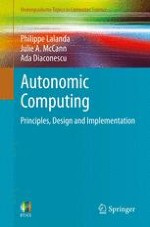2013 | OriginalPaper | Buchkapitel
3. Sources of Inspiration for Autonomic Computing
verfasst von : Philippe Lalanda, Julie A. McCann, Ada Diaconescu
Erschienen in: Autonomic Computing
Verlag: Springer London
Aktivieren Sie unsere intelligente Suche, um passende Fachinhalte oder Patente zu finden.
Wählen Sie Textabschnitte aus um mit Künstlicher Intelligenz passenden Patente zu finden. powered by
Markieren Sie Textabschnitte, um KI-gestützt weitere passende Inhalte zu finden. powered by
